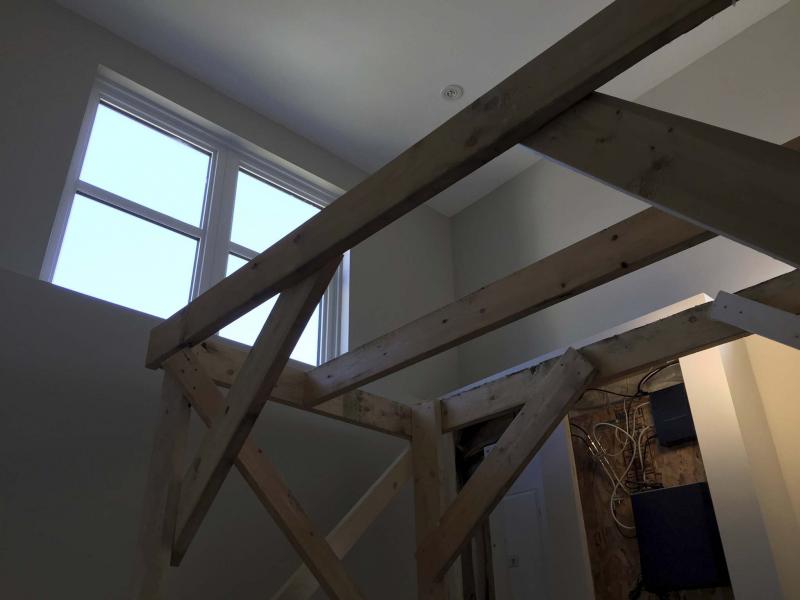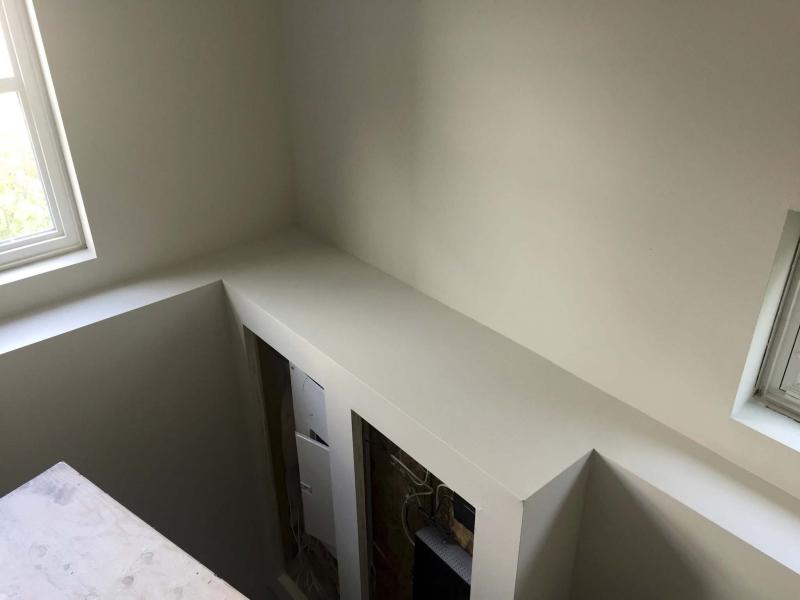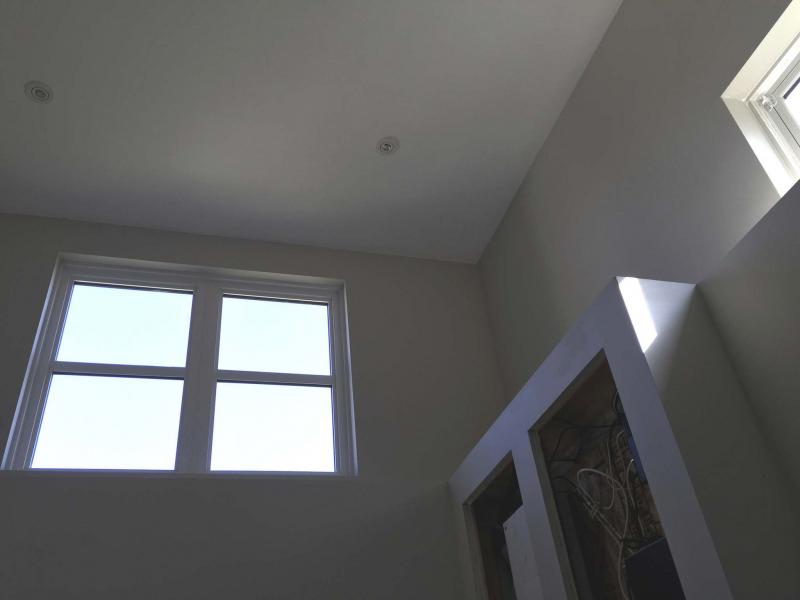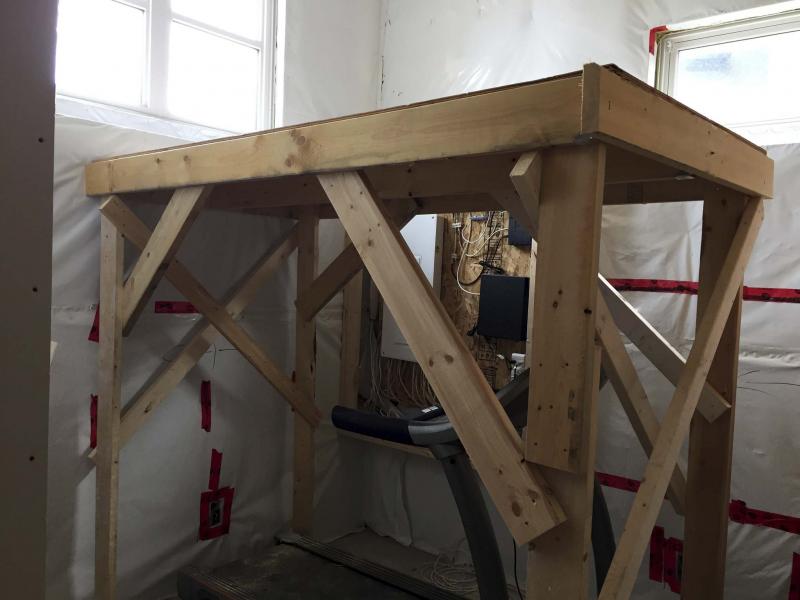
Marc LaBossierre / Winnipeg Free Press
With the sheeting removed, all that remains are the two-by-fours and two-by-sixes of the temporary platform for ongoing access to the 13-foot ceiling which provided convenient access to perform framing, electrical, and drywalling tasks before the upper area could be fully completed.

Marc LaBossierre / Winnipeg Free Press
The ceiling, boxing around ducting and the tops of the partial walls were tackled easily with the use of the temporary platform built to a height of seven feet.

Marc LaBossierre / Winnipeg Free Press
Once the ceiling and upper walls were painted and the pot lights were installed, the temporary platform was removed revealing the cathedral-esque ceilings within the space below the landing of the split staircase above.
You can’t do roofing without a ladder, paint without a brush or frame without a hammer. And when installing drywall on the ceiling, there’s no doubt a drywall hoist can make things a whole lot easier. At a job site in Sage Creek during the summer of 2016, a room with a very high ceiling presented a huge challenge, one that was eventually overcome by temporarily using materials from another aspect of the job.
In the northeast corner of Don Kennedy’s house, a staircase from the lower level to the second floor is split by an office-sized landing. As such, the ceiling of the room directly below is roughly four feet higher than the other nine-foot ceilings of the entire lower level. Once the framing of the interior walls was completed, isolated areas of the framework were required to box in ducting and create other aesthetics throughout the space. This became difficult in the room below the landing — with a 13-foot ceiling, a ladder could only give safe access to the perimeter of the room, at the top of the walls. And for the drywalling stage later on, most hoists are limited to 11 feet.
To access the entire area of the ceiling surface, it was necessary to get creative with remaining lumber ear-marked for the framing of the shower stall, which had yet been built.
Scaffolding would have been an option. However, with tight corners throughout the upper floor and the full 180-degree corner midway through the staircase leading to the lower level, negotiating scaffolding into the basement seemed implausible.
There had to be another way — and then it dawned on me! There was a pile of remaining lumber in the main rec room area that would be used to create the shower stall and sub-ceiling within the bathroom. What if I built a temporary platform in the room with the high ceiling?
That way, I could control every dimension, and then recycle the lumber for my bathroom needs once the high-ceiling room was completed.
And that’s what I decided to do. Shortly after the main walls had been framed throughout the lower level, and just before the electrical stage, an eight-by-six-foot platform, seven feet high was built in the 10-by-12-foot space, with a 13-foot ceiling.
The platform was no more than a small deck frame on stilts, topped with three-quarter inch sheeting. And access to the platform was as simple as using an eight-foot stepladder.
This allowed me to access the entire ceiling at arm’s reach when atop the temporary platform, to install wiring, ducting and vapour barrier. The platform could be moved to every corner of the space.
And when it came time to install the ceiling drywall, I simply manhandled each sheet onto the top of the platform, lifted the drywall into position by hand with one end supported by a horizontal two-by-four affixed to the wall just below the ceiling framing, and carefully screwed the drywall to the rafter joists.
It was a laborious task for one person, but one that could never have been achieved at all without the temporary platform.
Once the drywall was in place, the subsequent tasks were very easy to complete — all coats of mud during the mudding and taping stage, the sanding and painting, and the installation of the potlights. With the ceiling and the upper walls completed, the platform was disassembled, and the lumber was then used for its rightful purpose as the framework for the shower stall and sub-ceiling in the lower-level bathroom.
Sometimes, the obvious aspects of a job eventually present hidden complexities. It hadn’t occurred to me that the room below the split-staircase landing had such a high ceiling, that exceeded easy access.
With a little on-site ingenuity, there’s usually a way to get through an unanticipated challenge. And despite having to allocate previously unreserved time to build, and then dismantle the temporary platform, it was this very platform that saved time in the long run and kept the job on schedule.
BossEnterprise@outlook.com




